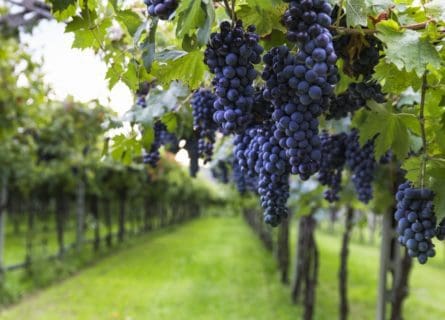
Cabernet Sauvignon Grape Variety: The World’s Most Popular Varietal
February 11, 2022
Discover the irresistible allure of Cabernet Sauvignon—a worldwide favorite with robust, dark-bodied flavor. Unleash your wine journey today!
By: James lawrence / Last updated: April 5, 2025
Estimated reading time: 21 minutes
At first glance, France remains aloof. Longstanding visitors to Bordeaux, Champagne, and Burgundy will tell you that at least the appellations have not changed meaningfully – based on initial appearances. The Medoc hierarchy, save the promotion of Mouton Rothschild, is as rigid as ever. Burgundy has not accepted new Grand Crus into the fold. NV Champagne is still made using the traditional method, blending across different terroirs and vintages to create a far greater product than the sum of its parts.
Discover More About French Wine
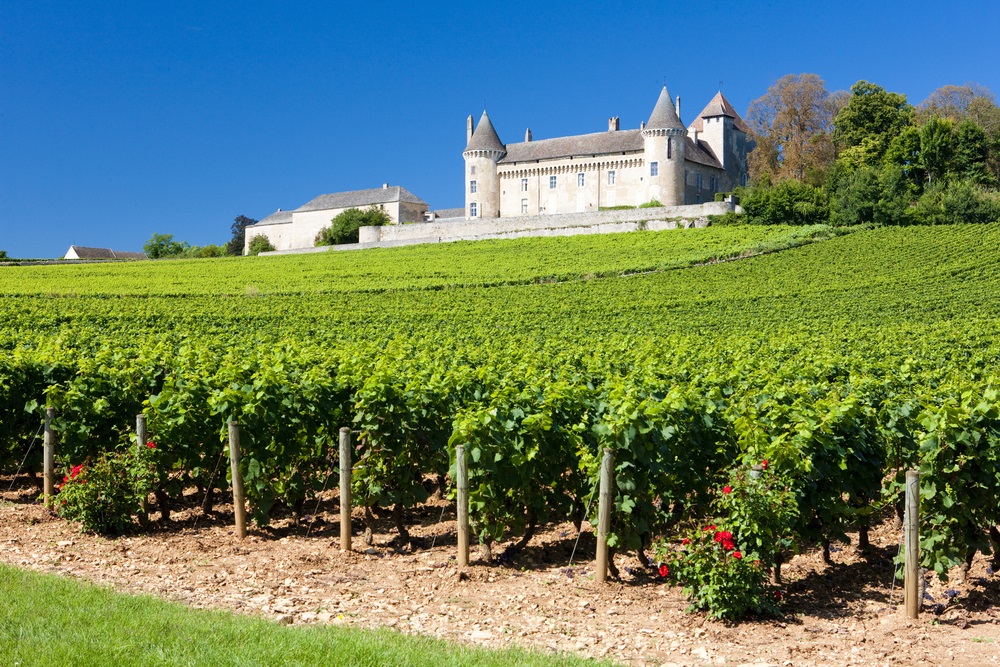
Ironically, this reactionary tendency may be the secret to France’s success. Despite the ever-increasing global competition, Champagne, Meursault, Pauillac, and Volnay are keenly sought-after commodities. They’re adored by collectors who view Gallic red winemaking as the pinnacle of all that is refined and sophisticated.
French red wine continues to dominate the secondary market and London, Hong Kong, and New York auction houses. Although most New World labels promote the grape variety with cheerful abandon, most French regions market soil and climate, not the varietal. This, they argue, gives them a decisive advantage. After all, good Merlot can be made worldwide – Pomerol can only come from Bordeaux.
However, France has changed a great deal over the past two decades. It’s just that winemakers tend to be more discrete about it. New hybrid varieties are being trialed in the fight against climate change, while the organic and biodynamic movement is spreading like wildfire. As a result, natural and low-intervention winemaking is all the rage, particularly in the South of France. Sustainability, once treated with scorn, is a major priority across Bordeaux. The region has even opened its heart to tourism, building new plush hotels, Michelin-rated restaurants, and tasting rooms. Of course, it’s far from becoming a facsimile of Napa Valley or Stellenbosch. But it’s a step in the right direction.
The other side of France is driven by value. Yes, value. Every major region, even Burgundy, produces superlative red wines that don’t cost the earth. With excellent vintages under its belt, mid-range Bordeaux red is an attractive proposition. Bourgogne Rouge is seldom overpriced, while the mighty reds of the Southern Rhône and Languedoc-Roussillon deserve greater recognition.
Indeed, the Rhône, even at the top end, has yet to catch up with Burgundy Grand Cru prices. Occasionally inflicted with a certain arrogance, this glorious wine-growing nation has delivered more pleasure than any other. We’d all be much poorer if France didn’t exist.
Explore Frances Key Wine Regions
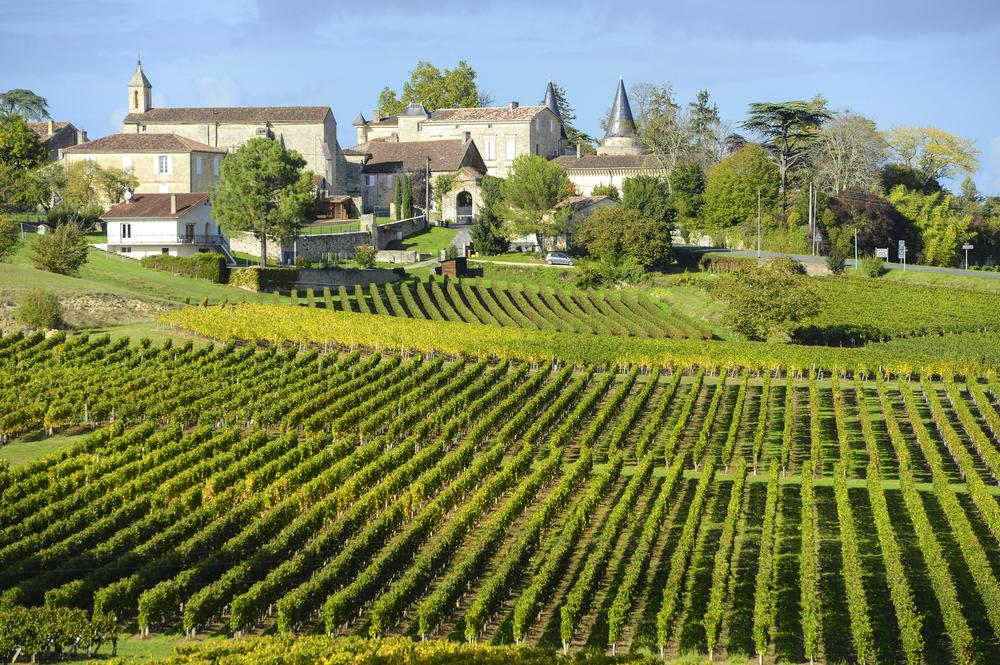
Welcome to the most diverse wine region on earth. Bordeaux caters to every whim and price point, encompassing various sub-zones and appellations. Collectors swoon over the First Growths of Pauillac, while students love the affordable wines of Fronsac. If you have a viticultural desire, Bordeaux will satisfy it.
In southwestern France, Bordeaux has been exporting fine wine since the Middle Ages. Although the area’s maritime climate can cause problems for late-ripening varieties like Cabernet Sauvignon, the terroir is first-rate. Well-drained gravel soils in the Medoc reflect heat into the canopy, helping the grapes reach good phenolic maturity levels, even in cooler years. In Saint-Emilion and Pomerol, clay, limestone, and sand are abundant, ideal for the earlier-ripening Merlot.
However, monovarietal wines are quite rare in Bordeaux. Instead, the region is celebrated for its signature red ‘Bordeaux blends,’ involving different proportions of Cabernet Sauvignon, Merlot, Cabernet Franc, and sometimes, Petit Verdot. The top labels are glorious: refined, structured, and complex red wines that can improve in bottle for decades. Chateau Latour, one of the great icons of Bordeaux, can be fresh and alive after a century underground.
Bordeaux is traditionally divided into two sub-regions: the Left and Right Bank. The Left Bank refers to the Medoc, located north of the city of Bordeaux and to the south Pessac-Leognan and Graves, flanking the west bank of the Garonne. Meanwhile, Saint-Emilion and Pomerol are the two most famous appellations of the Right Bank, situated east of the Dordogne.
Cabernet Sauvignon is king in the Left Bank, accounting for at least 70% in ripe vintages. The resulting wine style is typically built for the long haul. However, specific appellations and producers have been using greater proportions of Merlot in recent years to soften the tannic austerity. That grape variety has long dominated the wines of the Right Bank. However, when skillfully blended with Cabernet Franc, a more opulent and hedonistic style of wine emerges, characterized by beautiful violet, plum, and raspberry aromas.
The Left and Right Banks also take different approaches to classifying their wines. The seminal 1855 hierarchy remains in force today in the Medoc – only Chateau Haut-Brion is from outside the area – ranking chateaux from First to Fifth Growth. It is unlikely ever to change. Meanwhile, Saint-Emilion revises its democratic classification framework every decade – Pomerol sees no need for any formal ranking. As far as they’re concerned, the market is the only judge that counts. Considering the insatiable demand for Petrus and other brands, a lack of classification has not done any harm.
Of course, there is more to Bordeaux than classified estates. The wider region contains over 55 appellations, most of which do not produce expensive red wine. However, Fronsac, the Saint-Emilion satellites, Lalande de Pomerol, Blaye, and Bourg are all extremely adept at marketing high-quality reds at affordable prices. They lack the glamour of Chateau Lafite, to be sure, but that doesn’t make them any less delicious.
Learn More About the Key Appellations in the Bordeaux Wine Region
The mighty red grape of Bordeaux is now a familiar face worldwide. Late-ripening Cabernet skins are packed full of wonderful color, flavor, and tannin. It will produce the most structured and long-lived red wine imaginable in the right hands. Moreover, its signature scent of cassis is adored by all.
Despite the so-called ‘ Sideways effect, ‘ Merlot remains astonishingly popular with consumers and growers. It ripens earlier than Cabernet Sauvignon, producing softer and more approachable wine with plum, raspberry, and mint notes. In Saint-Emilion and Pomerol, it yields voluptuous wines of immense charm.
The ‘third variety’ of Bordeaux is no poor relation. Capable of producing exquisite and aromatic red wines, Cabernet Franc is now much admired in the Right Bank. It ripens earlier than Cabernet Sauvignon and blends with Merlot, adding perfume and freshness. At Cheval Blanc, it can sometimes constitute over 40% of the final blend.
Petit Verdot continues to divide opinion in Bordeaux. Difficult to grow, especially in cooler vintages, it can nevertheless add spice and potency to the red wines of the Medoc.
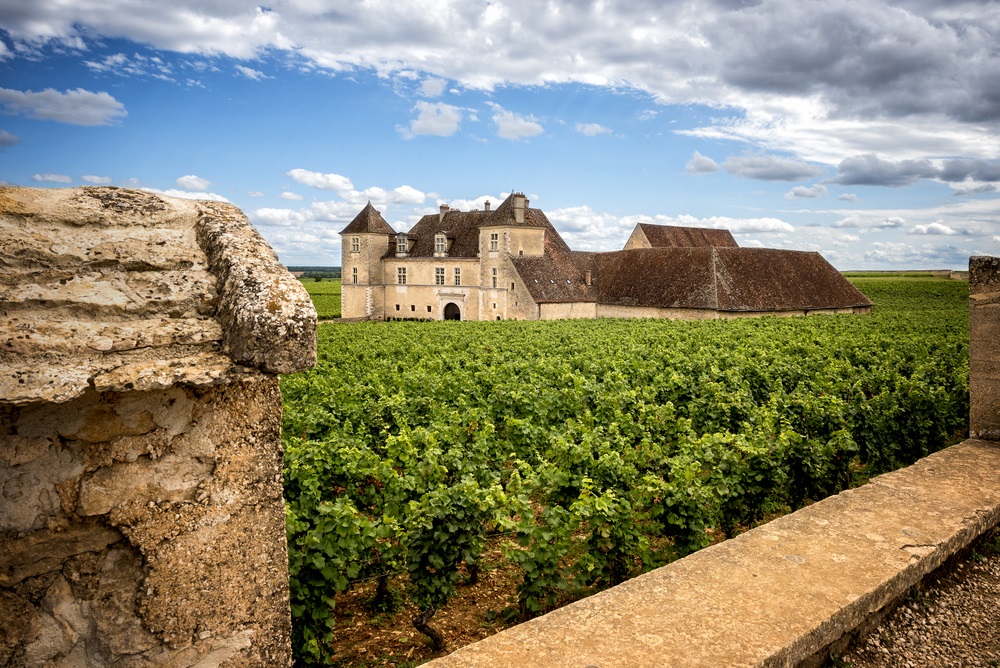
In almost every conceivable way, Burgundy is the antithesis of Bordeaux. The system of land ownership, wine classification, and winemaking philosophies are diametrically opposed. Blending different varieties is severely frowned upon in Burgundy, as is ‘splicing’ terroir. In Burgundy, the land is considered genuinely sacred. Question this paradigm at your peril.
The region’s history is long and distinguished; Burgundy was the richest of France’s ancient duchies, while the Cistercian Monks of the Middle Ages pioneered viticulture. The religious establishment laid the foundations for Burgundy’s landmark system of classifying the land. Burgundy is in central-eastern France, where vineyards thrive in a continental climate. However, it is important to remember that “Burgundy” refers to several distinct sub-regions grouped under the umbrella term. For example, the wines of Musigny have little in common with Beaujolais Nouveau, yet both would be considered red Burgundy.
In terms of fame and international recognition, however, Côte d’Or stands head and shoulders above the rest of the region. The “golden slope” is responsible for the finest – and most expensive – Pinot Noir in the world. Wine lovers and collectors can name every climat (single vineyard) and will happily wax lyrical about the particular qualities of Bonnes Mares and La Tache. By law, only 100% Pinot Noir expressions are allowed. Blends are forbidden in the Côte d’Or.
Running from just south of Dijon to the west of Chagny, the Côte d’Or is perhaps the greatest viticultural mystery of all. For centuries, its vineyards have been classified according to the quality of the wine they produce. There are four tiers: Grand Cru, Premier Cru, Village, and Generic. It is taken for granted that a Grand Cru vineyard like Musigny will yield grapes with more character, depth, and complexity than a village site.
Yet no one precisely understands why this is. To an extent, it can be attributed to a more favorable aspect, drainage and soil structure. But the central mystery remains. Geologists have been analyzing the clay/limestone soils of the Côte d’Or for many decades. But unfortunately, they have yet to provide a definitive answer.
The contemporary face of the Côte d’Or is highly fragmented; vineyards often have multiple owners, perhaps cultivating less than 2 hectares. Clos de Vougeot, for example, is farmed by over 45 different grower families. Therefore, the quantities made are often very small, which is one of the reasons why red Burgundy fetches such astronomical prices on the secondary market. The area is divided into two sub-regions: Côte de Nuits and Côte de Beaune. The former is responsible for almost all Burgundy’s illustrious Grand Cru climats, including La Romanee Conti, La Tache, and Musigny. A great deal of excellent red wine is also made in the Côte de Beaune, most frequently in Volnay, Aloxe Corton, and Pommard.
So, where does one find good value in the heartland of exceptional Pinot Noir? First, you need to journey to the less exalted appellations and villages. The Côte Chalonnaise, south of Chagny, is a fertile hunting ground for well-made and inexpensive Pinot Noir wines. In particular, the Givry, Mercurey, and Rully communes lack the structure and power of the Côte d’Or. However, they can offer beautiful red fruit and aromatic complexity.
We must also not omit Beaujolais from this discussion. Located south of Macon, the region’s red wines are still vastly underrated, despite the efforts of Beaujolais’s quality-focused growers. Of course, a decent volume of anemic and lackluster Beaujolais is still exported worldwide. But there is an ever-increasing amount of superlative wine, often going for a song.
The northern section’s warm climate and granite terroir are custom-made to produce fragrant and elegant red wines. The wines of the Beaujolais Crus, particularly Fleurie, Morgon, and Moulin a Vent, are as complex and delicious as Côte d’Or reds. For sure, Gamay can be frivolous and one-dimensional. Yet, it is capable of so much more in the right hands.
Learn More About the Key Appellations in the Burgundy Wine Region
Adored by both oenophiles and winemakers, Pinot Noir is arguably France’s most challenging grape variety. Highly sensitive to its environment, clumsy winemaking can easily ruin this capricious grape. Fortunately, a skilled hand (and great terroir) creates pure bottled magic with an exquisite bouquet of crushed red fruit and plum. The esteemed wine writer Hugh Johnson once claimed that the best Pinot Noir has “reserves of flavor beyond imagination.” He is spot-on.
Like Pinot Noir, Gamay is very much a product of its terroir. Consequently, the resulting wine is often pale and acidic when planted in clay soils. Warmer conditions, however, can yield wines of good weight with beautiful aromatics and silky tannins.
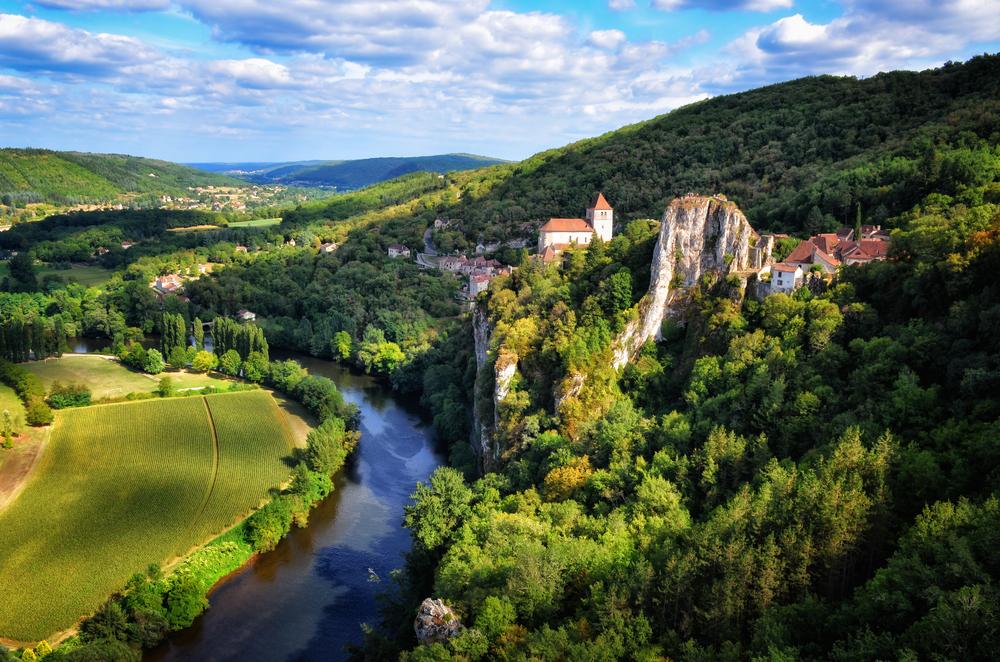
There is no question that Cahors is not an international bestseller. Compared to Bordeaux and Burgundy, it is scarcely recognized outside Western Europe or France. Nevertheless, there is much to recommend about Cahors, famous for its legendary ‘Black Wine’ of the Middle Ages. The vineyards are found north of Toulouse, in a very beautiful part of central France. The principal grape variety is Malbec, known locally as “Cot.” Sometimes blended with Merlot (permitted under the appellation rules), the resulting wine style bears little resemblance to Argentina’s signature export.
Instead, you’ll discover lovely aromatic complexity and good acidity but not the velvety texture and concentration of Mendoza’s best. All agree that the top-performing climats are south-facing vines planted on three alluvial terraces above the River Lot. The diurnal temperature variation keeps everything fresh and lively—a Cahors trademark.
Learn More About the Key Appellations in the Cahors Wine Region
The hero of Argentina owes its provenance to Bordeaux, although the grape is now scarcely used in the wines of the Medoc. Adapting relative ease to various soil types, Malbec runs the whole gamut from spicy, middle-weight reds to very concentrated and deeply colored wines.
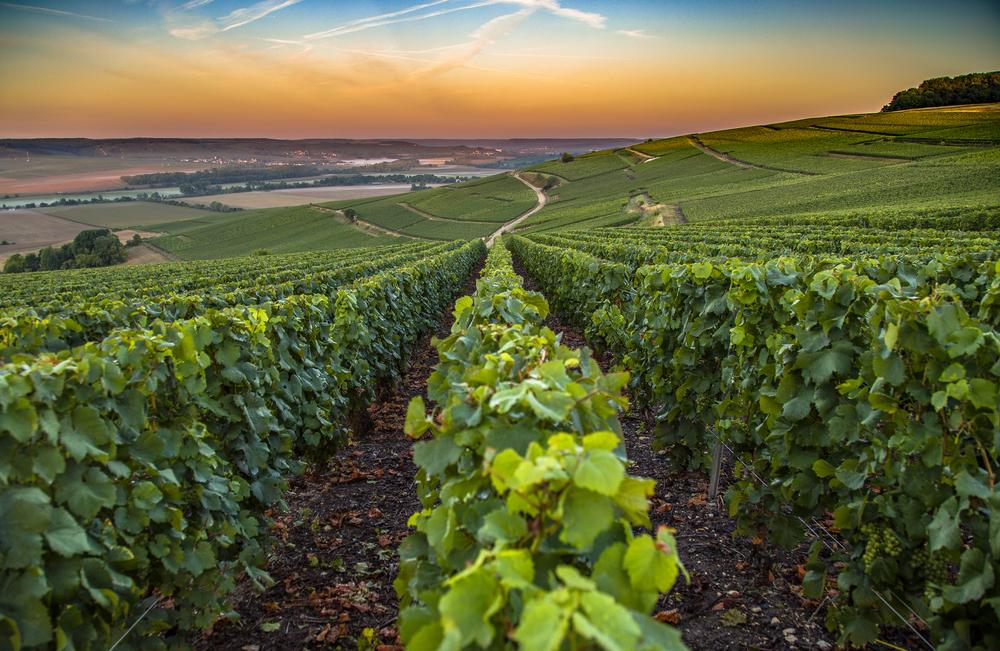
From a historical perspective, the inclusion of Champagne in this red wine discussion makes sense. Situated approximately 122 kilometers east of Paris, the region still produced red wines long before champagne became synonymous with fizz; its global reputation was established only in the 19th century. In the Middle Ages, Paris’ ‘backyard’ was responsible for supplying the taverns of the City of Light with pale (and probably very acidic) reds, some of which were based on the Pinot Meunier grape. It remains an important part of Champagne’s viticultural landscape today.
Indeed, most winemakers would not countenance omitting Pinot Meunier from the region’s signature non-vintage (NV) style. In recent years, about one-third (34,000 hectares in total) of vineyards in Champagne are used to grow Pinot Meunier – it is more adept at handling cold than its common blending partner Pinot Noir. Although there is some debate about Pinot Meunier’s ability to enhance long-aged cuvèes (it is said that the grape peaks very quickly), houses like Krug remain resolutely committed to blending all three varieties. At its best, Pinot Meunier contributes red fruit, spice, and creaminess to all good Champagne. Perhaps the most hedonistic – and yet occasionally maligned – of the region’s key blending materials.
Learn More About the Key Appellations in the Champagne Wine Region
Champagne’s lesser-known red grapes can bring much to the world’s most iconic sparkling wine. Growers regard Meunier as relatively robust and easy to grow; it is a relatively early-ripening variety that will succeed in various soil types and micro-climates. In addition, it is appreciated for its open fruit profile and vibrant acidity, although detractors claim that Pinot Meunier has nothing to gain from the extended bottle age.
Discussed above.
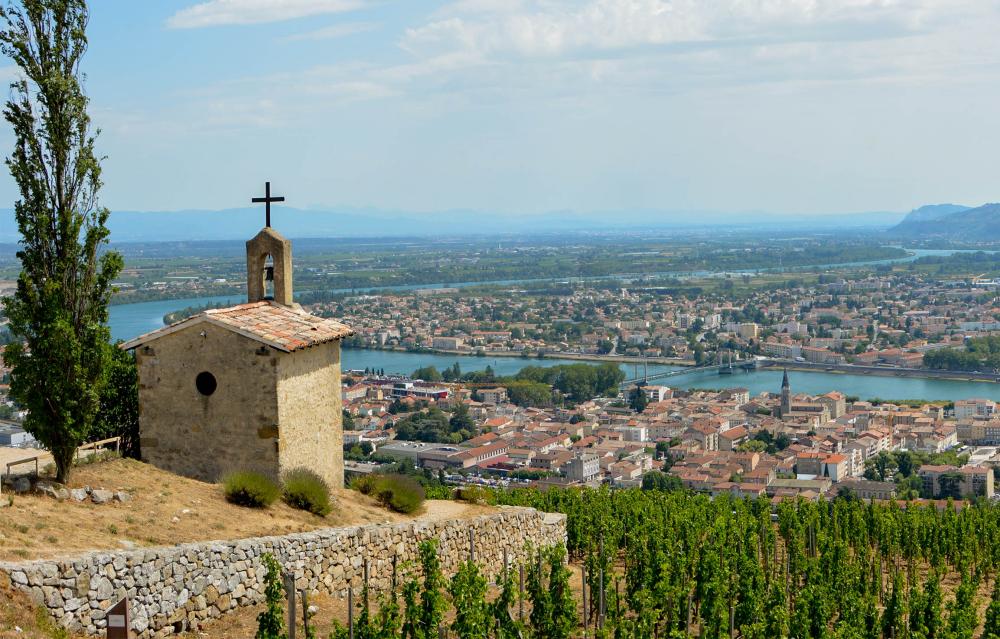
Although the Rhône may lack the global cachet of Bordeaux and Burgundy, its glorious red wines are exquisite and long-lived. The Rhône Valley, defined by the winding river that runs a 250-mile course to the Mediterranean, has long been divided into two key regions: the Northern and Southern Rhône. These two areas’ viticulture, terroir, and wine style are remarkably different.
The area under vine is expansive, running from the commune of Vienne to Montelimar, the latter signifying the start of the Southern Rhône region. Vineyards’ south of the border’ are heavily weighted towards Grenache. However, the Northern Rhône stakes its reputation on the mighty Syrah grape, occasionally enlivened with a dash of Viognier, Marsanne, and/or Roussanne.
It reaches an apogee on the steep, narrow banks of Côte-Rotie and Hermitage, which are cultivated on metamorphic granite terroir; with its cold winters and warm (but not hot) summers, the continental climate ripens the grape to perfection. In Côte-Rotie, oenophiles are treated to a potent combination of force and finesse, with Burgundy-like flavor transparency.
Meanwhile, Hermitage offers a more concentrated and voluptuous interpretation of Syrah, with chocolate, plum, and leather aromas. Although winemakers have traditionally produced cuvèes based on wines from different plots, the cult of the single vineyard is alive and kicking in the Rhône. Guigal’s range of single-vineyard wines, including La Mouline and La Turque, are said to be the finest expressions of Syrah in the world. However, aficionados need not restrict themselves to the most iconic labels; the quality of Syrah witnessed in the lesser-known appellations of Cornas and St Joseph is very impressive, particularly when considering the amazing value on offer.
However, Syrah is less important in the vineyards south of Montelimar. The Mediterranean climate of the Southern Rhône is far more suited to cultivating robust, late-ripening varieties like Grenache, Mourvèdre, and Cinsault. Nevertheless, a classic local blend mixes Grenache, Mourvèdre, and a smaller percentage of Syrah to create a spicy cocktail – a wine style celebrated for its warmth and potency. GSM is the local synonym.
The terroir of the Southern Rhône is as eclectic as any you’ll find in Bordeaux. Châteauneuf-du-Pape is the region’s most popular and recognized appellation, littered with galets (giant pebbles) that help reflect sunlight into the canopy. The wine varies enormously: Châteauneuf-du-Pape can be medium-bodied and fresh or massively concentrated, rich, and strong.
Elsewhere, sandy soils predominate, while bands of limestone, clay, and alluvial deposits are situated throughout the wider region. As elsewhere, growers exploit altitude to their mutual advantage; the slopes southwest of Mont Ventoux are prized for the cool night air descending from the mountaintop. As a result, some of the Southern Rhône’s most elegant Syrah is made in Ventoux: fresh, lively, and packed with ripe acidity.
Much well-made red wine is produced under the Côtes du Rhône and Côtes du Rhône-Villages appellations. At the same time, Gigondas and Vacqueyras (the latter created in 1990) are reliable sources of excellent wine. However, in keeping with the general theme of the Rhône, GSM blends are the mainstay of production, imbued with the signature scent of garrigue.
Learn More About the Key Appellations in the Rhône Wine Region
Syrah has proven itself to be a most willing and adaptable traveler. In the Northern Rhône, Syrah is responsible for the supremely elegant labels of Cote Rotie. It yields more alcoholic and voluptuous wines in the South of France, where it is usually blended with Grenache. The flavor profile ranges from white pepper and raspberry to dark chocolate and mocha.
Grenache enjoys a global renaissance as winemakers reassess their apathy towards this tricky variety. Grenache is late-ripening and prone to oxidation, so it requires careful handling. But old bush vines can yield wines of real class and complexity, with crushed red fruit aromas and supple tannins.
Mourvèdre has its fair share of fans and detractors. The main red grape of Bandol in Provence, Mourvèdre, is packed full of tannin, color, and extract. Unfortunately, it can take a lot of work to coax finesse out of the grape, as it is prone to reduction. Nevertheless, aficionados love its gamey bouquet and firm tannic structure, which is ideal with strongly flavored dishes.
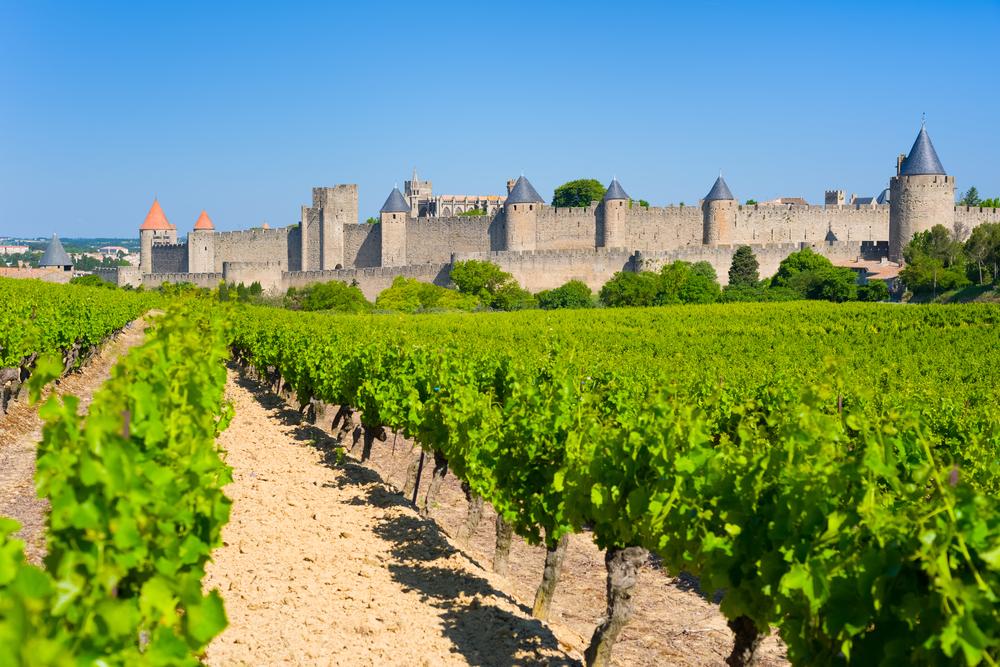
The South of France now offers a surfeit of high-quality red wines to match its beguiling scenery, gastronomy, and culture. But it was not always so; volume was the chief priority for most growers during the 20th century, churning out rustic reds sold at bargain-basement prices. Then, the next generation, conscious of the encroaching competition from the New World, decided to turn things around. Propelled by a rash of domestic and foreign investment, the South of France is now brimming with concentrated, fresh, and delectable red wines.
There is certainly an incredible amount of choice in the gigantic expanse of the Languedoc-Roussillon. The area under vine encompasses over 280,000 hectares, extending from Montpellier on the Mediterranean coastline to within touching distance of the Spanish border. The sheer diversity of terroir among the numerous appellations and sub-zones is astounding.
For example, the high-altitude sites of Limoux have little in common with the sun-baked coastal vineyards of Fitou. The climate is decidedly Mediterranean, although variances in elevation inevitably create a patchwork of distinct micro-climates in the Languedoc-Roussillon. Soils range from calcareous marls to alluvial deposits, while schist and sandstone dominate western Languedoc. It is a veritable paradise for the grower who wishes to push boundaries and experiment.
Indeed, one of the most popular designations is Pays d’Oc. Unveiled in 1987, it became a ‘Protected Geographical Indication’ (IGP) in 2009. Today, any winegrower in the broader region is entitled to produce red wines labeled as Pays d’Oc from a selection of over 55 grape varieties! Mirroring the Southern Rhône, GSM blends are trendy, occasionally ‘spiced’ with a dash of Cinsault or Carignan. A great deal of excellent rosè is also made under the auspices of the Pays d’Oc label.
Historic appellations also play a key role in the winemaking culture of the Languedoc-Roussillon. Some of the most important and quality-driven include
Corbieres, Fitou, St-Chinian, Limoux, La Clape, Boutenac and Minervois. Pioneers like Gerard Bertrand have been particularly focused on the vineyards of Minervois, situated to the northeast of Carcassonne. The lower slopes of the Montagne Noire yield wines that skillfully combine power and supreme elegance.
The modern consensus, though, is that the vineyards surrounding the commune of La Liviniere are the finest in the entire Languedoc-Roussillon. Unsurprisingly, more than 90% of all Minervois reds are based on the quintessential Grenache/Syrah/Mourvèdre concoction, with smaller amounts of Cinsault/Carignan. In addition, Lledoner Pelut, a seldom-recognized local grape, is also sometimes used.
In many ways, Provence’s revival echoes that of its close neighbor. After a slow start, Provencal red wines are starting to earn a reputation abroad for their quality and spicy potency, broadly emulating the blending traditions of the Languedoc-Roussillon. In addition to a large volume of delicious rosè, the Côtes de Provence appellation is increasingly admired for its premium reds, characterized by herbal scents and concentrated summer fruits on the palate. But, thus far, prices have yet to catch up with the stars of the Southern Rhône.
Ultimately, Provence’s greatest gift to red wine lovers is surely Bandol. It is the only French appellation to place Mourvèdre front and center in the wines, supported by smaller amounts of Grenache and possibly Cinsault. The town is flanked by south-facing terraces, interspersed among pine trees and the iconic garrigue of the southern Mediterranean. Bandol is utterly exquisite, hedonistic, ripe, and fresh. It can be enjoyed young yet will age for over a decade in bottle. Seduction is thy name.
Learn More About the Key Appellations in the Languedoc-Roussillon Wine Region
Syrah/Grenache/Mourvèdre – discussed above
A key part of the Mediterranean viticultural diet, Cinsault needs first-rate terroir if the winemaker wants premium quality. Sometimes derided for its tendency to crop at high yields, Cinsault needs very poor and infertile soils and judicious pruning. However, the best examples are delightfully perfumed and fresh, with black pepper, violet, and strawberry aromas.
Carignan, another Mediterranean variety that continues to divide opinion, ranges from the sublime to the godawful. Old bush vines give the best results: berry-scented red wines of considerable interest. Like Cinsault, high yields can result in pale, aggressively acidic wine.
If you would like us to customize an exclusive luxury tour, contact us and let us know your travel plans. We offer luxury food and wine tours for private groups of a mininium two guests. In addition, all of our private, chauffeured tours are available year-round upon request.


Tex Hoopersays:
June 9, 2022 at 12:44 am
You make a great point about using late-ripening tips. I need to expand my cellar. I'll have to hire a contractor to help me out.